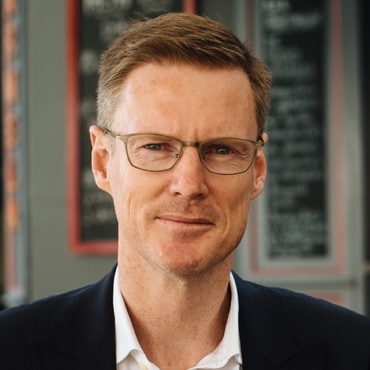
 Money isn’t everything
Money isn’t everything
Do you ever wish you had a little bit more money to play with? Or a bit more time?
I was presenting to a group of adviser/owners recently and made the statement that “Lack of cash is a blessing, not a curse.”
As I expected this caused a fair few comments. It might be hard to believe, but bear with me. There’s a very good reason.
The upside of limits
The truth is that every single business that succeeds does so while constrained. That almost certainly means cash constrained; operating with less resources than they might deem ideal; and/or needing more than 24 hours in each day.
Yet there’s a gift in these constraints.
In Tony Hsieh’s bestselling book Delivering Happiness: A Path to Profits, Passion, and Purpose, he tells the story of Zappos, which started life as an online shoe retailer.
After launching in 1999, struggling for a number of years without adequate funding, they had no budget for marketing. So they decided to forget traditional advertising and marketing, and focus solely on delivering an amazing customer experience. As Tony says in his book, they had no choice; effectively this decision was forced on them. Yet it became the making of them. Today Zappos are considered one of the best customer services businesses in the world.
 Constraint makes creativity
Constraint makes creativity
In a recent blog from master of all things habit, James Clear, The Weird Strategy Dr. Seuss Used to Create His Greatest Work, he describes a $50 bet between Bennett Cerf, founder of publishing firm Random House, and Theo Geisel, better known as Dr. Seuss.
James says, “Cerf…challenged that Dr. Seuss would not be able to write an entertaining children’s book using only 50 different words. Dr. Seuss took the bet and won. The result was a little book called Green Eggs and Ham has sold more than 200 million copies, making it the most popular of Seuss’s works and one of the best-selling children’s books in history.”
When I took some time off, after exiting my Financial Planning business in Sydney, I took a writing course just for fun. Our teacher made the point that all types of writing (screenplays, novels, poetry) have rules, and it’s the rules or limitations that bring out the creativity. In his opinion unstructured writing with no limits or rules was just rubbish.
One could say the same about life and business. It’s the things we say ‘no’ to that define our lives and our businesses. It lends the things we say ‘yes’ to greater meaning and fulfilment.
How can you apply this to your business?
The solution is simple when you take stock of what you have, rather than focusing on what you lack. Ask yourself how you can still get to your goal with the resources you’ve got.
Here are a few examples:
Website wishlist
Don’t have £5,000 to spend on getting a new website? Are there other ways to get something done that looks amazing?
Maybe you could:
- Call in a favour from a friend who builds websites
- Offer a skills exchange; some financial planning advice for some website design
- Use a cheaper website template, and spend your limited budget on getting a designer to make it look great
Tech necessities
Can’t find the one-size-fits-all technological solution to make things better for clients and more automated for you and your team? (Nor can I). What can you cobble together using various pieces of technology already available in the marketplace?
Team work
Can’t find good staff? How can you streamline your approach to Financial Planning, and work with the strengths of the team you’ve already got in place?
 Less can be more
Less can be more
Here’s a great example of doing more with less.
When you start reflecting on the client experience you provide, the one thing that comes up over and over is the amount of paper and information that advisers deliver. It’s just too much and no client wants it.
Most firms simply blame the FCA and their compliance people for forcing them to go down this path. They then hire more staff to keep up with churning out the paperwork and reports.
Great firms ask themselves how they can do less. Not in a sleazy, buck-the-system kind of way, but in an effort to make the client experience better; to reduce the information overload (a win/win scenario).
I’ve encouraged many firms to stop writing a Financial Plan for clients (blasphemous, I know). What I mean is ceasing preparation of a plan before the adviser and the client have agreed the strategy and way forward.
A strategy can be researched by the adviser, discussed with and understood by the client, all before a report gets written.
Only after a final set of recommendations is agreed should a suitability report be prepared for the client.
This one change to the advisory process can save hours and hours of preparatory work in the back office for your paraplanners, advisers and administration staff. It also makes the advice process a lot more customer friendly.
Working out what to do for a client takes two hours. Turning it into a written Financial Plan can take five or ten. If you strip that out of your process you save time; need less people; increase client satisfaction; and up referral rates.
Time constraints can make you more productive too. As the old saying goes, if you want something done, give it to a busy person. Lack of time forces you to get organised (just ask any parent). It also forces you to prioritise; to choose what’s most important.
Become a master planner
The most productive people I know plan each week and each day, which is when they choose what’s important, and then execute the plan they’ve made. They simply do what they said they would do. If they have a day that gets away from them, and don’t we all occasionally, they simply get back on the horse the next day. They plan their next day and execute what they planned.
Giving yourself time constraints will, surprisingly, allow you to get more done. You’ll be focused on what needs doing, with much less excuse for distractions.
As Verne Harnish, author of Scaling Up: How a Few Companies Make It and Why the Rest Don’t, says, “Routine sets you free.”
 Love your limits
Love your limits
What constraints are you operating under right now? What gifts are hiding in plain sight amongst those constraints, if you let yourself dig a little more? How have others overcome similar constraints in their business?
Let me know how you go.
 “Professionals set a schedule for their production, while amateurs wait until they feel motivated.”
“Professionals set a schedule for their production, while amateurs wait until they feel motivated.”
“Setting limits for yourself — whether that involves
the time you have to work out, the money you have to start a business, or the number of words you can use in a book — often delivers better results than ‘keeping your options open’.”
James Clear
“Professionals set a schedule for their production, while amateurs wait until they feel motivated.” James Clear



5 comments to " No Money? No Problem: The good side of business constraints "